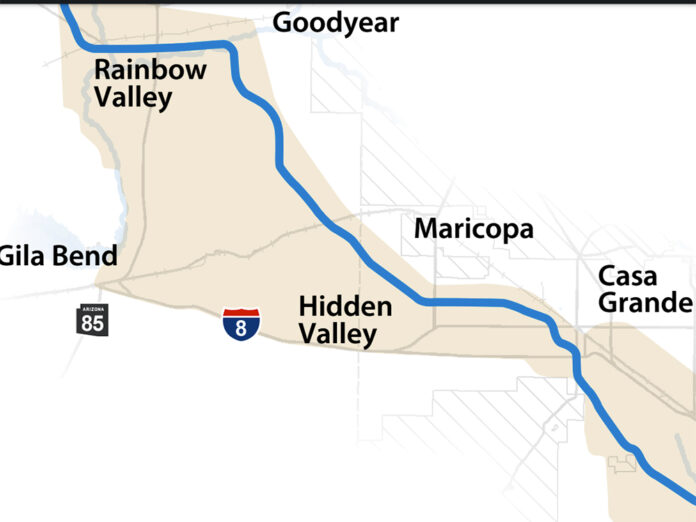
Latest in a series reviewing news events of the past year.
The mostly unfunded Interstate 11 project has many, many miles to go before carrying traffic from Nogales to Wickenburg, via Hidden Valley.
Late in 2021, the U.S. Department of Transportation published its findings for the I-11 study corridor — a 2,000-foot-wide, 280-mile path — and recommended a route for the proposed freeway. It was the final step in the Tier 1 Environmental Impact Statement process.
The action cleared the way for the Tier 2 process, which will determine the actual 200- to 300-foot-wide alignment within the larger corridor, to proceed. The project is backed by city leaders in Maricopa.
But in April, four Tucson-area conservation groups sued the Federal Highway Administration, challenging its approval. As proposed, the interstate would be routed around the west side of Tucson, head north through Casa Grande then cut through Hidden Valley to west of the Palo Verde Mountains before continuing north through the western part of the state.
In their lawsuit, the groups claim the highway, as routed, will destroy “pristine” desert, worsen air pollution and endanger wildlife.
The plaintiffs contend the FHWA failed to consider other transportation alternatives, including a rail line, and “sidestepped” the required environmental review before approving the project.
The case, assigned to Judge John Hinderaker of U.S. District Court in Tucson, has yet to be decided. The federal government, meanwhile, has asked Hinderaker to throw out the suit.


![Alleged car thief released without charges Phoenix police stop a stolen vehicle on April 20, 2024. [Facebook]](https://www.inmaricopa.com/wp-content/uploads/2024/04/IMG_5040-218x150.jpg)
![Locals find zen with Earth Day drum circle Lizz Fiedorczyk instructs a drum circle at Maricopa Community Center April 22, 2024. [Brian Petersheim Jr.]](https://www.inmaricopa.com/wp-content/uploads/2024/04/PJ_3922-Enhanced-NR-218x150.jpg)










![Alleged car thief released without charges Phoenix police stop a stolen vehicle on April 20, 2024. [Facebook]](https://www.inmaricopa.com/wp-content/uploads/2024/04/IMG_5040-100x70.jpg)
![Locals find zen with Earth Day drum circle Lizz Fiedorczyk instructs a drum circle at Maricopa Community Center April 22, 2024. [Brian Petersheim Jr.]](https://www.inmaricopa.com/wp-content/uploads/2024/04/PJ_3922-Enhanced-NR-100x70.jpg)
